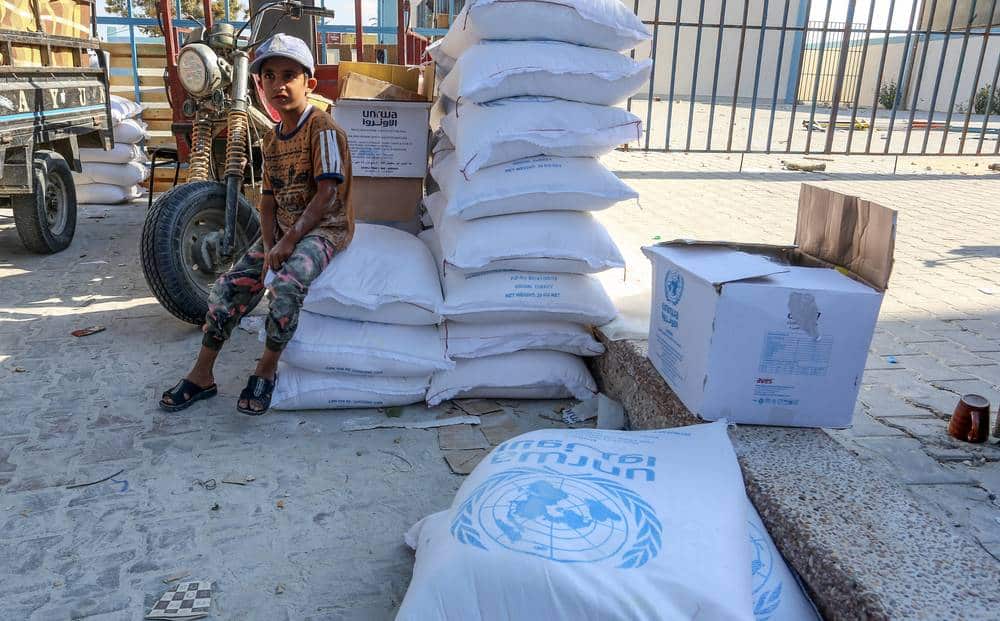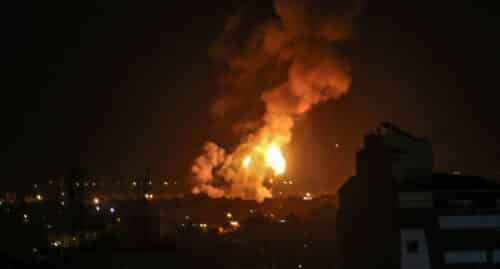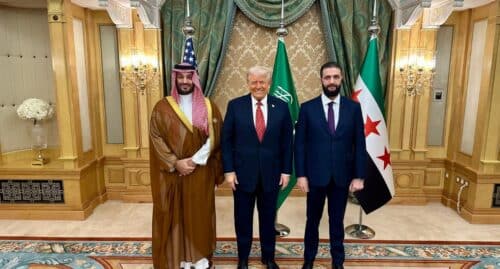
Recently, in one of the Pentagon’s press conferences ahead of the American mission to establish a causeway for aid in Gaza, Pentagon spokesman Pat Ryder was asked how the Administration was going to ensure the humanitarian aid reaches civilians and not Hamas. In other words, the Israeli allegation is that the bulk of the aid gets stolen by Hamas the minute it enters the Gaza Strip via the land crossings. It does not reach the civilians – which helps Hamas maintain its war machine. Ryder, in reply, was nothing less than flabbergasting: “If Hamas truly believes that the people, the Palestinian people are suffering, then why would they want to take this aid and use it for themselves to support their terrorist organization? One would hope that this aid will get to the people that are most deserving and in need.”
In fact, Ryder admits the Administration’s policy assumes that at the end of the day, Hamas cares about the well-being of the Palestinians. With this, the Administration falls for Hamas’ cynical manipulation, which counts on world goodwill, which for its part sees the suffering of the Gazan people and is prepared to pressure Israel to ease their suffering. Hamas uses the suffering of the people in Gaza for its propaganda purposes and for pressuring Israel. The fact that the USA has fallen for this Hamas tactic is no less than shocking. It only reinforces Hamas’ incentive to use the civilian population as a human shield since this strategy works – it is more harmful to Israel than it is to Hamas. Instead of forming a method for aid distribution that would ease the humanitarian situation in Gaza on the one hand, while preventing the aid from reaching Hamas on the other, the Administration is once again engaging in public declarative gestures aimed at pacifying domestic public opinion.
Ryder was then asked about the potential risks to the American mission, such as for example Hamas endangering American crew members and launching rockets against them. He gave a similar answer: If Hamas truly does care about the Palestinian people, then again, one would hope that this international mission to deliver aid to people who need it would be able to happen unhindered – said Ryder. In this response he exposed the American lack of long-range thinking about Gaza and about the most basic logical flaws in this aid plan. In fact, in his answer he reflects the American lack of understanding of the Middle East in general, and of the Palestinian people in Gaza in particular. The Administration’s policy is gradually but consistently drifting toward hope-based and optimism-based policy, rather than being pragmatic, which raises serious concerns regarding their ability to develop realistic plans for the conflict going forward.
For the United States, the optics of the situation in Gaza supersedes long-term thinking, which would put in place the conditions for improving the lot of the people in Gaza – in other words, by toppling Hamas rule in Gaza. As a terrorist organization and a non-state player, Hamas is able to use the most powerful weapon in its arsenal, which is to create a humanitarian crisis in Gaza in order to generate international pressure. This tool of theirs is s force multiplier, which it uses to the utmost effect on world public opinion which, quite justifiably, is shocked by the human suffering there.
In such a situation, a terrorist organization will always be able to extract concessions from the other side. Hamas loses nothing when Gazan civilians die. It can only gain from this. Therefore it has no interest whatsoever in avoiding actions which would exacerbate the humanitarian predicament in Gaza while still maintaining the pretense of fighting for the good of the Palestinian people. When American humanitarian aid will enter Gaza by sea, there is no guarantee Hamas won’t commandeer it. In an extreme scenario, which is by no means unrealistic, Hamas might indeed attack the American warships using the ever-effective excuse – defending the Palestinian people against a Western invasion, rejection of aid from a world power that is aiding the Israeli “occupation” in Gaza or other propaganda-friendly pretexts.
Anyone that has a genuine interest in stabilizing the Gaza situation and preventing Hamas growth long-term, must insist on three conditions: 1. Destruction of Hamas’ military and governmental capabilities. 2. Prevention of any dependency between the civilian population and Hamas, which will exploit its distress to pursue its own goals and 3. De-radicalization of the education system, purging it of incitement, in such a way that it will no longer toxify the next generation of Gazan children, preventing them from becoming tomorrow’s terrorists.
To achieve these goals, and to reduce the number of dead in the long term, Hamas must be defeated at all costs. Failure to get the job done is going to be much more costly to Israel and to the Gazan population in the long term. The United States, too, was forced to reach some highly-agonizing decisions during World War 2, such as the fateful decision to drop two Atom bombs on Japan. In the short term the bombs killed hundreds of thousands, but in the long term it saved millions of Japanese lives since that country surrendered several days later. This, according to historical estimates, prevented the unnecessary death of millions more on both sides – American and Japanese. Israel, for its part, is not even seeking to end the war in Gaza this same painful way – it only seeks legitimacy for the eradication of Hamas’ military and government apparatus, and is doing so with the greatest surgical precision possible under the difficult circumstances presented by the battlefield.
To be able to comprehend this simple principle, it is advisable first to begin understanding the Hamas enemy itself – instead of assuming it is ultimately interested in the good of the Gazan population.
This article was originally published in ynet news.






